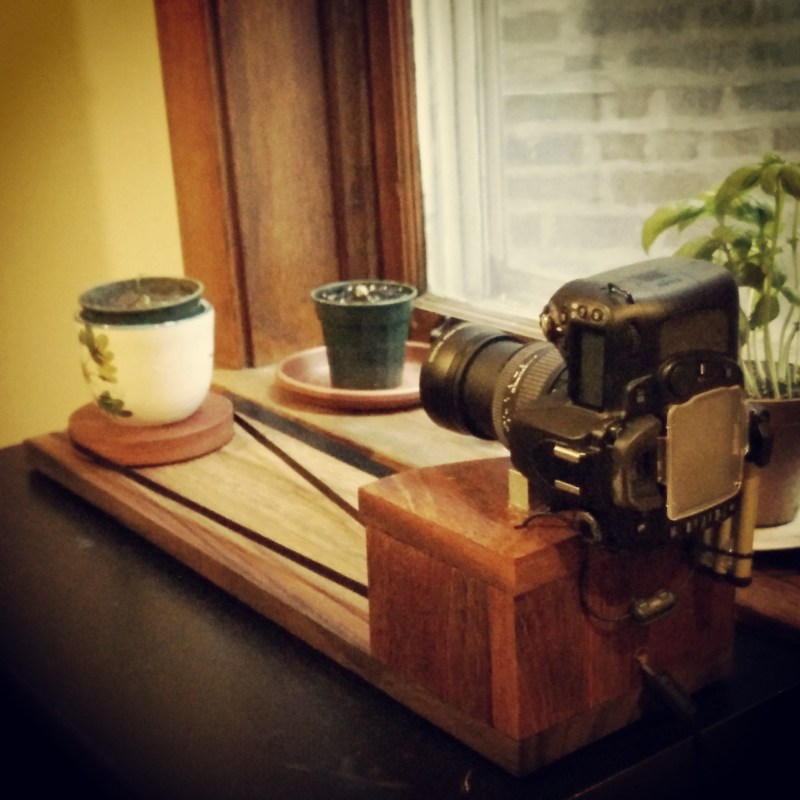Automating the growing process of plants and vegetables is an increasing trend among gardening enthusiasts and hobbyists. It’s no surprise, either, with microcontrollers, moisture sensors, Co2 detectors, and even time-lapse cameras with rotating wooden rigs that are in the hands of millions of amateur gardeners around the world.
This project by [Liz] helps to document the sprouting process of her tiny grapefruit bonsai tree that started to flourish at her apartment in Chicago.
Similar rigs can be used for practically any type of indoor plant. They can also be modified to move the plants and vegetables depending on how much light they are getting. Even further, just add some code to splice the photographs together and you’ve got yourself a custom setup that can produce animated GIF files to be uploaded easily to the internet. Pages and pages of happy and healthy growing plants unearthing themselves from the ground up would be pasted all over the web showing the entire sprouting process. An example video of this by [Liz] is embedded below.
















You spin me right ’round, baby Right ’round like a rotating plant timelapse rig, baby Right ’round, ’round, ’round
Dizzy, my plant is spinning, like a rotating plant timelapse rig, it never ends, and it’s you girl, building rotating plant timelapse rigs, making it spin….
Seriously? A ONE SECOND timelapse video? It took me longer to click the darn play button :(
She says she just finished the project, and plants *do* tend to take a while to grow.
I think Matt did it to spite us. A animated gift would have sufficed.
…and what a gift it would have been!
[Liz] it may help registration to adhere a few notches to the bottom of the pot to match a cutout on the top of the rotating table. That way you could move the bonsai off and on without jumps in the video.
I love the feel of the rig. Nicely done!
It is a good thing they’re rotating seedlings here. Because vegatative plants do not seem to like to be reoriented as much. Yes, plants move, but at the same time they’re not too keen on being moved. I imagine because while plants move, they’re just not very good at it.
galaxy rotatestoo, earth rotates too, plants are on earth, so S T F U
That’s…idiotic, Edgar. You’re clearly not a gardener. Plants have evolved to live in specific conditions…and they face themselves towards light sources. Rotating the plant changes the amount of viable sunlight the plant receives. And, generally speaking, they aren’t a huge fan of it.
Plants evolved in a habitat where the sun moves literally from one extreme side of their frame of reference to the exact opposite, every single day.
You would need some sort of encoder, but the easy solution is to only spin the plant for the picture and then spin it back to where it was. The plant should hardly notice the light source changing for a few seconds, and I think it would create an interesting viewpoint because it would still grow in the same direction but be visible from every angle.
Now I really want to build a rotating plant time lapse rig… really internet? Really?
It depends on the frequency and amount of movement. An indoor plant that receives significant light from only a single direction (like a window), and is allowed to fully adapt over weeks to that condition, won’t like suddenly being turned 180°. Turn it the same total amount over the same time, but in smaller increments, and it will fare somewhat better. And outdoor plants experience significant movement in relation to the light source on a daily basis, no problems there.
This plant rotisserie is fast (relatively speaking) and steady enough that although it may not be optimal, it shouldn’t cause significant issues.